Say hello to the white peach, a creamy white peach with a sweeter taste and lower acidity than yellow peaches. Here’s everything you need to know about white peaches!
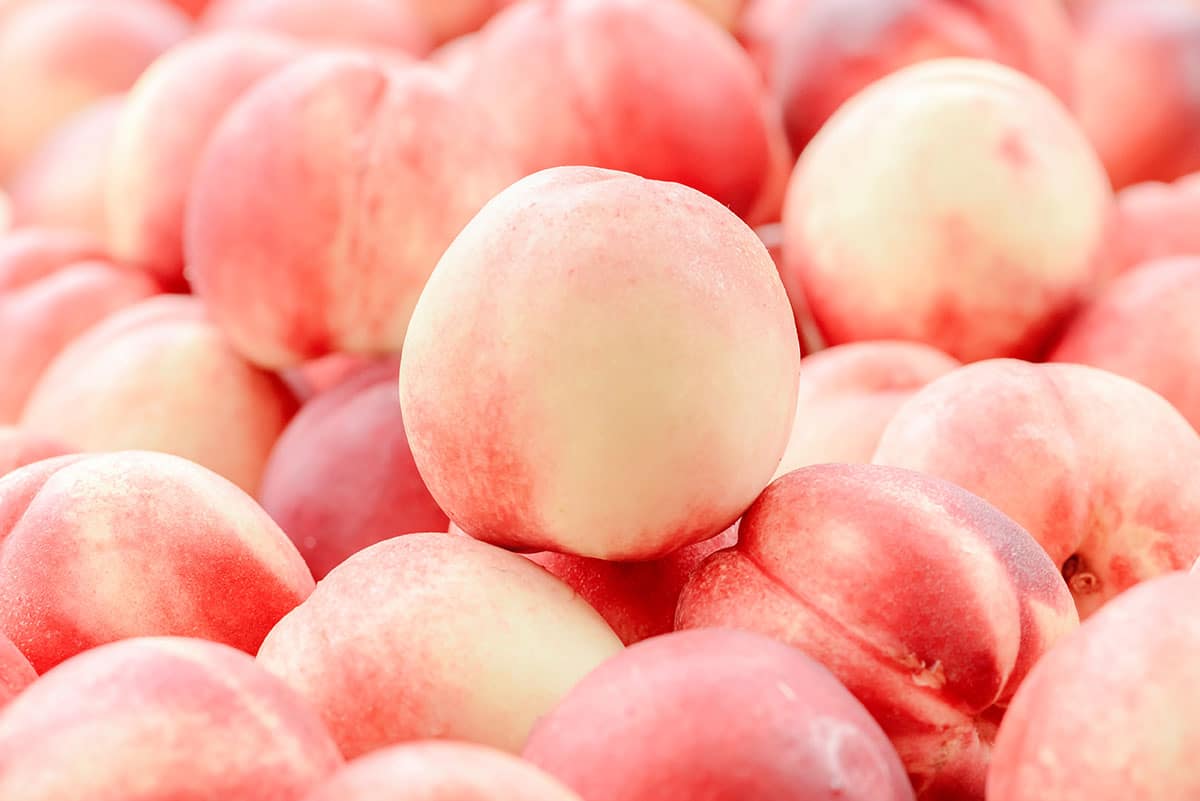
What is a White Peach?
The white peach, also known as ivory peach, is a peach with a pale creamy-white flesh and a light delicate flavor.
Unlike yellow peaches, which have a tangy and sweet flavor, white peaches (similar to white nectarines) are less acidic and have a milder taste. They are great in a wide variety of both sweet and savory recipes.
Origin of the White Peach
White peaches are believed to have originated in China where they were a symbol of longevity and wealth, and have been cultivated for about 2,000 years. They were long used in local medicines to treat such ailments as sore throats and coughs.
Yellow peaches also originated in China, but are probably closer to 4,000 years old. Food historians do not agree on this point, some claiming that the white peach predates its yellow cousin. From China white peaches migrated to Persia (modern day Iran) and ancient Greece.
In the 16th century peaches were brought to the “New World” by Spanish explorers, and were planted in California sometime around the 17th century. English colonists also planted peach trees along the American East Coast, but over time, white peach varieties faded from commercial popularity. Throughout the 19th century, white peaches were generally considered inferior to yellow peaches in America, and were fed to livestock.
It wasn’t until the 1980s that white peaches began to rise in demand, favored for their sweeter, less tangy flesh. New varieties were also developed in the late 20th Century that improved the fruit’s sweet taste and transportability to commercial markets.
Where are white peaches grown?
Today white peaches are grown worldwide in Asia, Europe, Australia, South America, and North America, with major production sites in China, the United States (mostly California), and Italy. When in season, the white fruits are found in local markets, groceries, and specialty distributors.
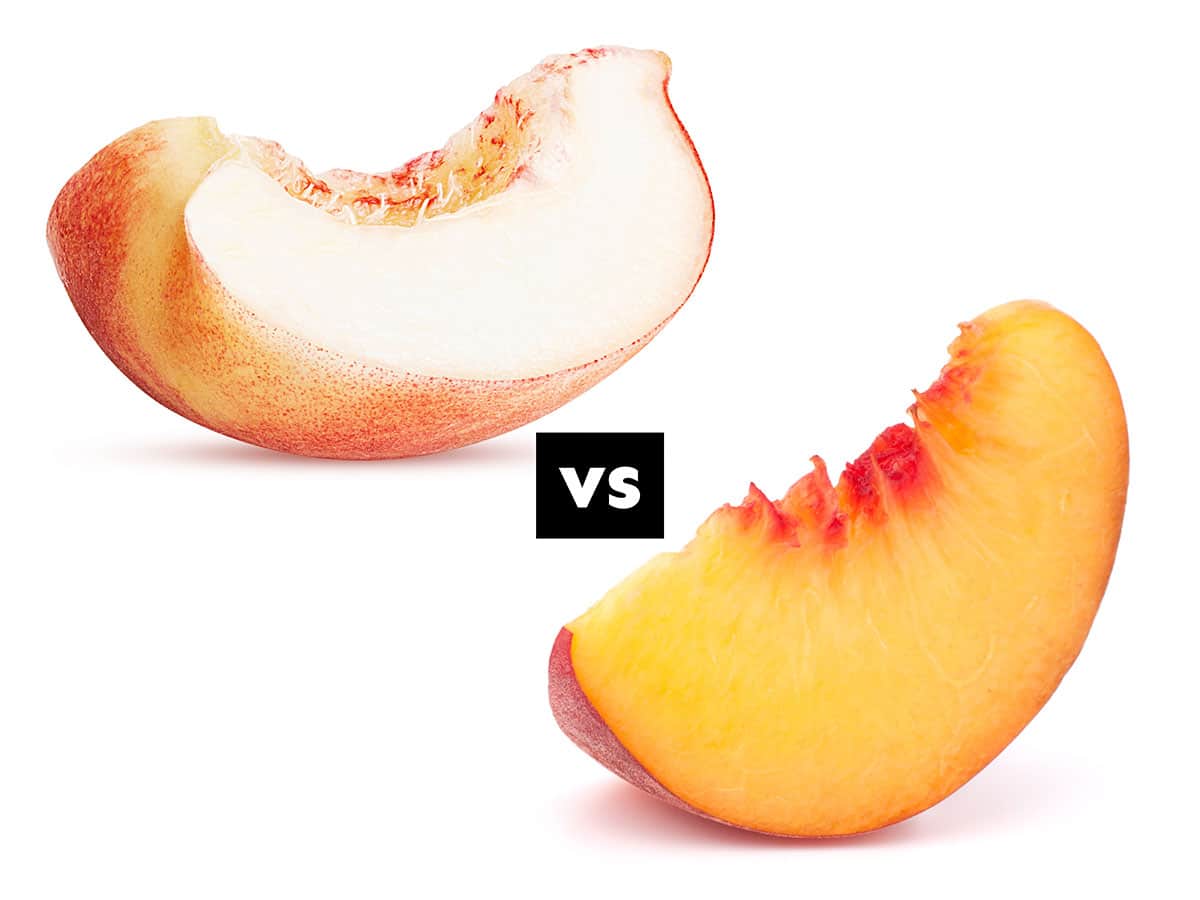
Difference between Yellow and White Peaches
Yellow and white peaches are different peach cultivars that differ in appearance, taste, and texture. Some of the key differences between yellow and white peaches include:
- Appearance: Yellow peaches have a bright, sunny yellow skin with a red blush on one side, while white peaches have a pale, creamy white skin with a pink blush.
- Taste: Yellow peaches have a tangy, sweet flavor with a slightly acidic aftertaste, while white peaches have a milder, sweeter flavor that is less acidic.
- Texture: Yellow peaches have a firm, slightly dense flesh, while white peaches have a softer, juicier texture that is almost melting in your mouth.
Best Uses for White Peaches
Yellow peaches are often used in baking and cooking, as they hold their shape well and have a slightly firmer texture. White peaches are more delicate and are often eaten fresh or used in dishes where a softer texture is desired such as smoothies or fruit salads.
Because of their delicate flavor and texture, white peaches are often used in desserts, such as pies, cobblers, and ice cream. They can also be eaten fresh as a healthy snack or added to veggie salads for a sweet and juicy contrast. They are a great option for this Grilled Peach Caprese Recipe or in these Peaches and Cream Overnight Oats!
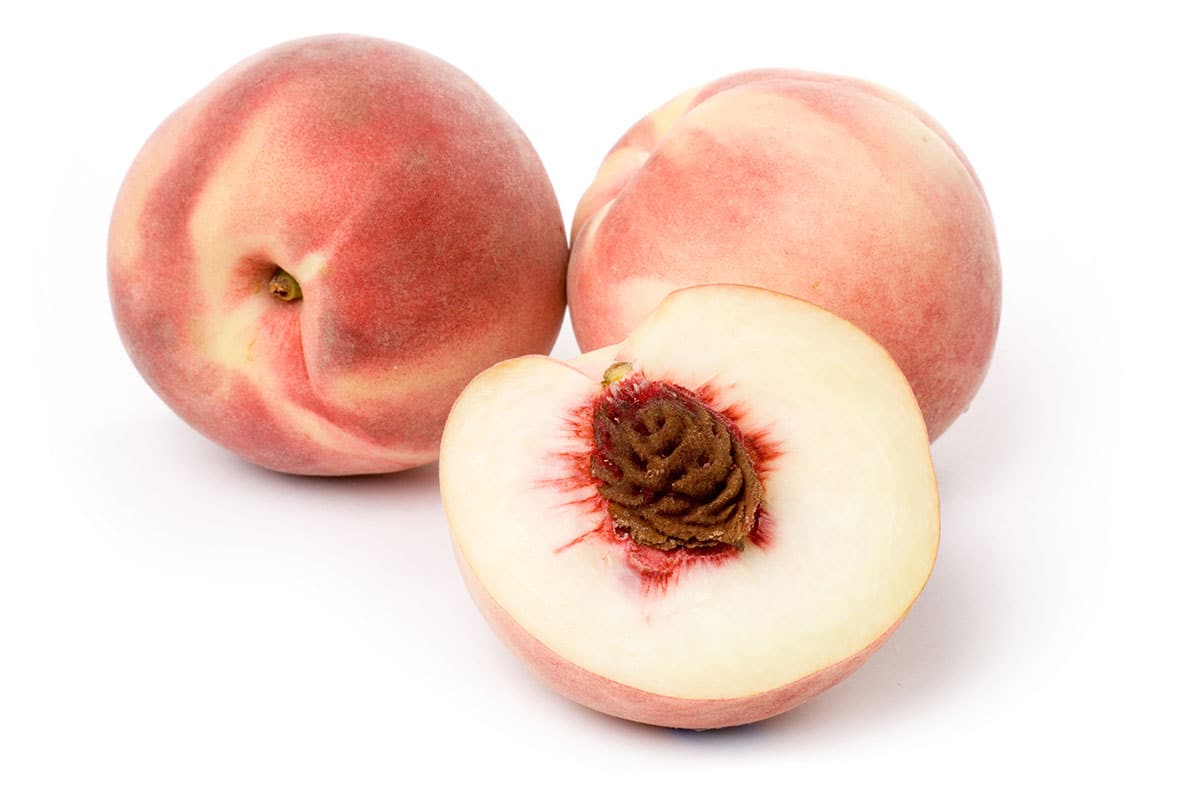
White Peach Nutritional Information
White peaches are a good source of vitamin C, vitamin A, potassium, and dietary fiber. They are also low in calories. Yellow peaches are slightly higher in vitamin A than their white peach cousins, as one could guess from their orange pulp.
A medium sized peach (about 5 ounces) contains:
- 58 Calories
- 2.2 grams of Fiber
- 10% of the RDA of Vitamin A
- 17% of the RDA of Vitamin C
- 8% of the RDA of Potassium
Are Peaches Keto?
No. Peaches are not keto friendly unless eaten sparingly. A medium peach contains 15g of carbs. You would certainly do better to eat a peach than white bread or candy which are high in carbs and have little nutritional value. The vitamins and minerals in a peach can be difficult to get from high fat and high protein foods.
How to Select White Peaches
When choosing white peaches, look for fruits that are slightly soft to the touch and have a sweet fragrance. Avoid those that are overly soft or have bruises or blemishes. The riper they are, the easier they bruise.
How To Store Peaches
To store white peaches, keep them at room temperature until they are ripe, then refrigerate them to keep them fresh for a few days.
We hope you have found some information here you can use. White peaches are a great option in just about any recipe or application calling for peaches. Their sweet juicy flavor makes them a great option in fruit salads, smoothies, kombucha, pretty much you name it. And as always Happy Cooking!
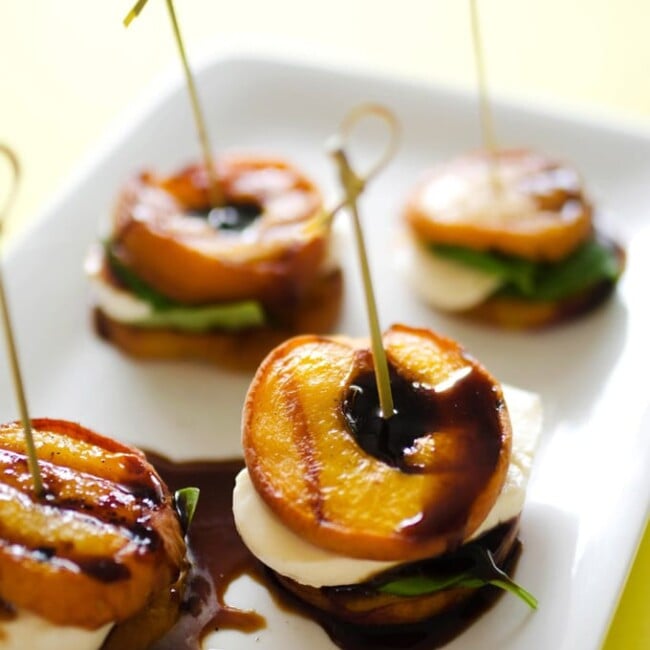
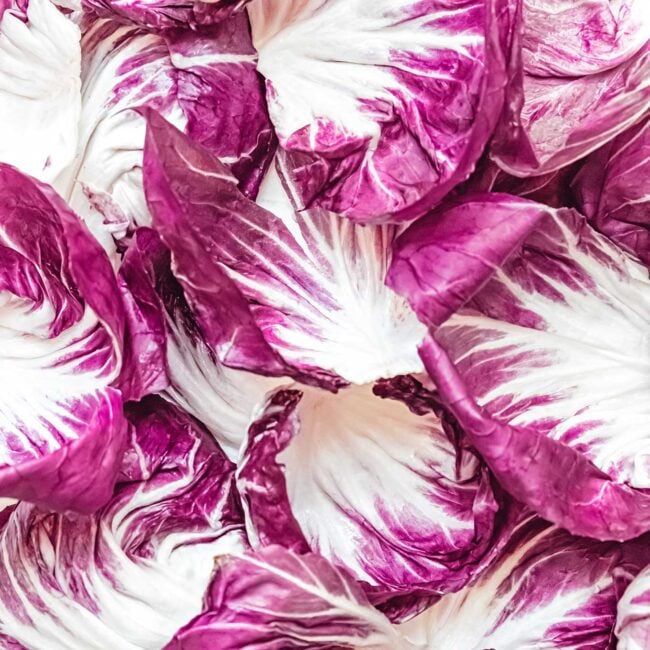
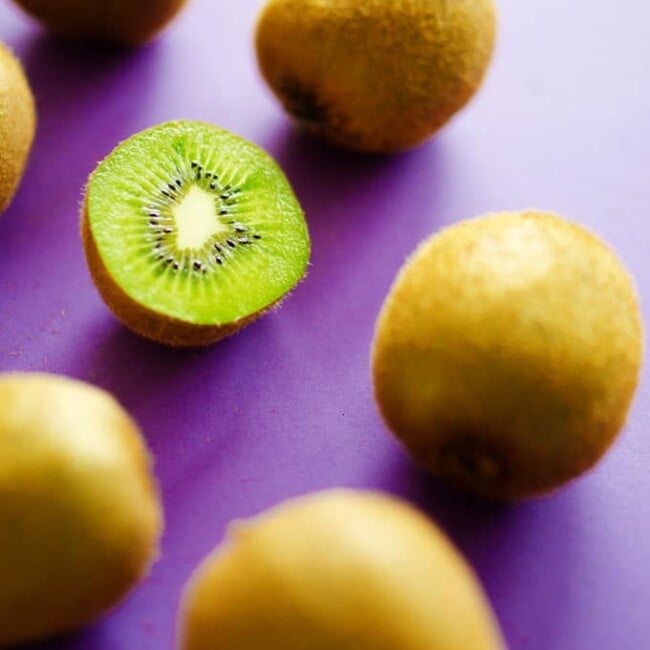
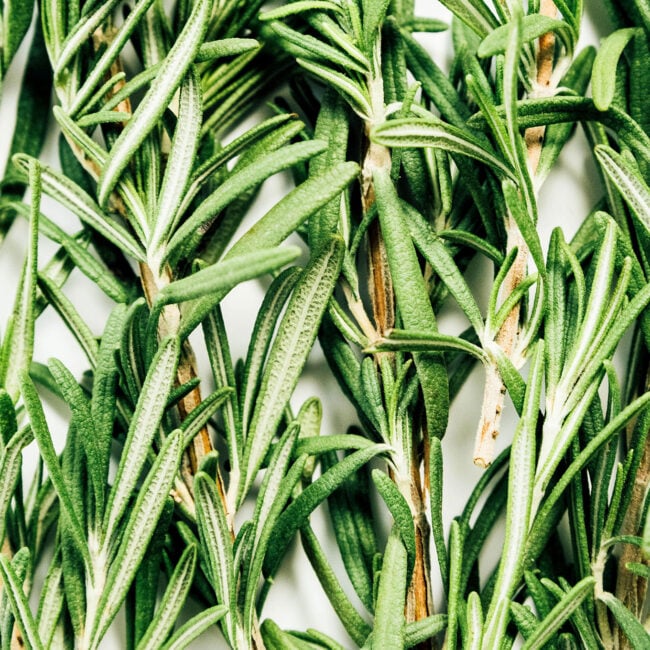
Therese A Snell says
is it okay to can white peaches
Sarah Bond says
Yes! We don’t have instruction on how to do this though, unfortunately.
Allen R Coggins says
I just recently discovered white peaches and found them to be among the most delicious fruits I have even eaten.